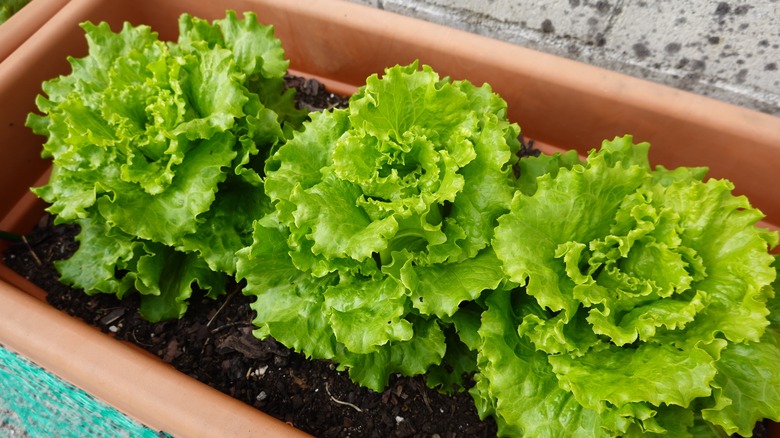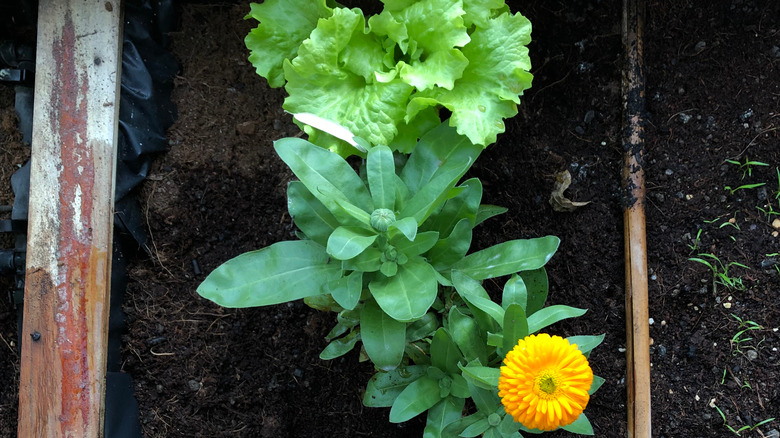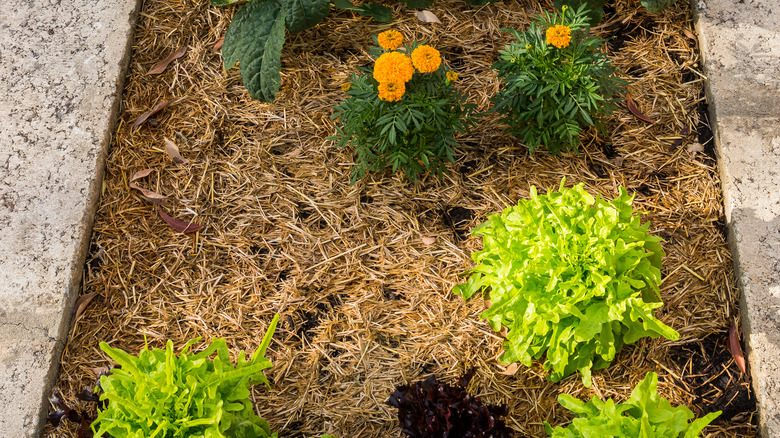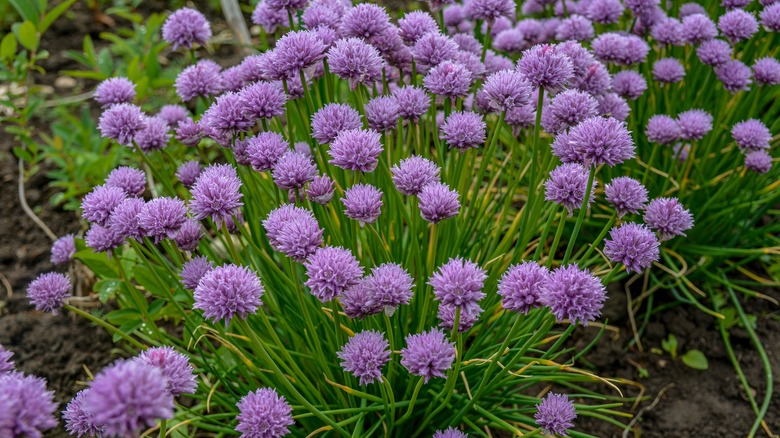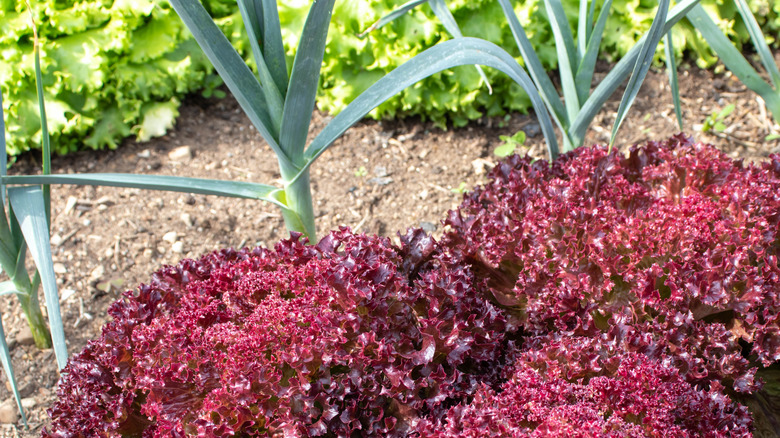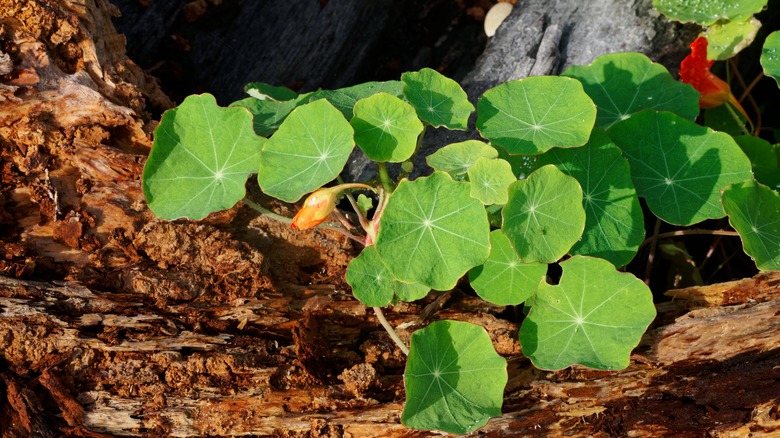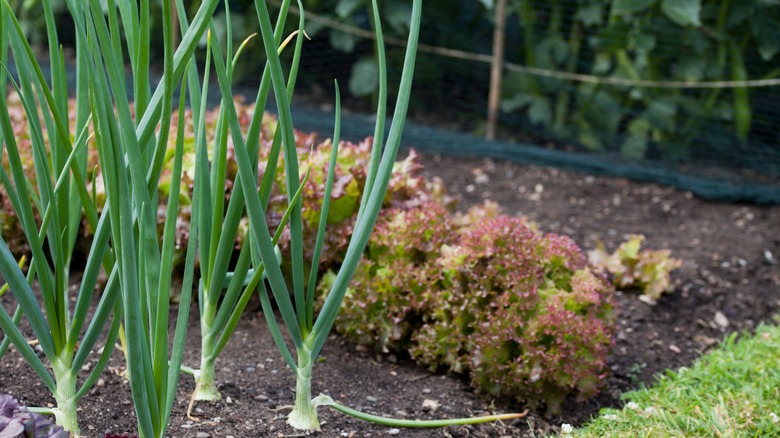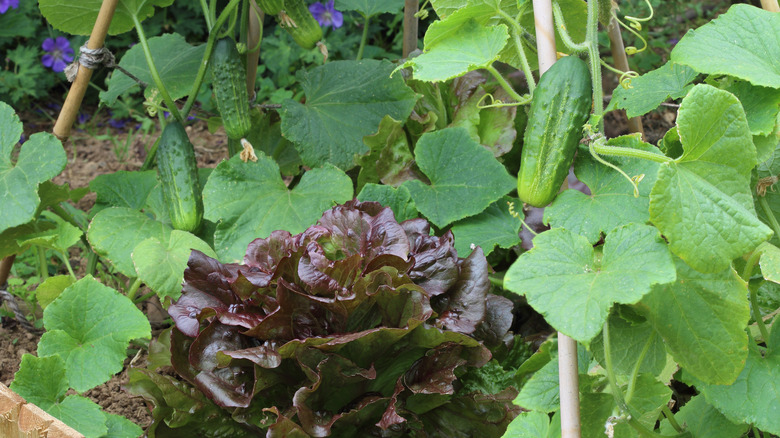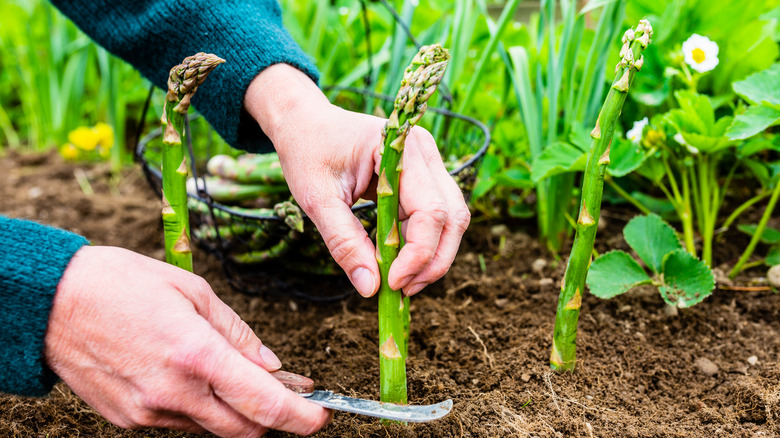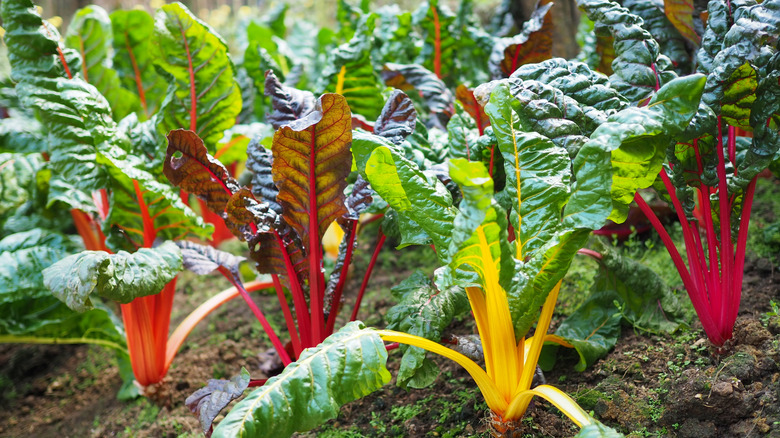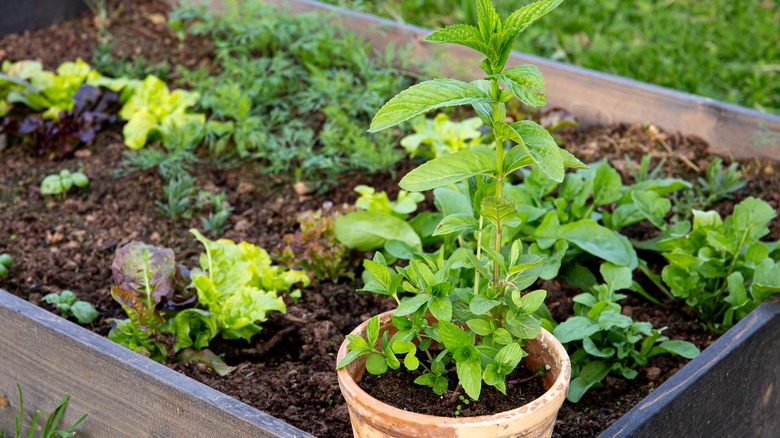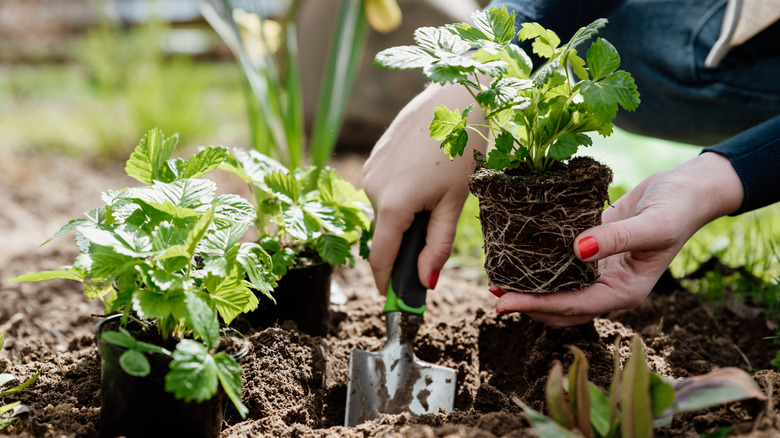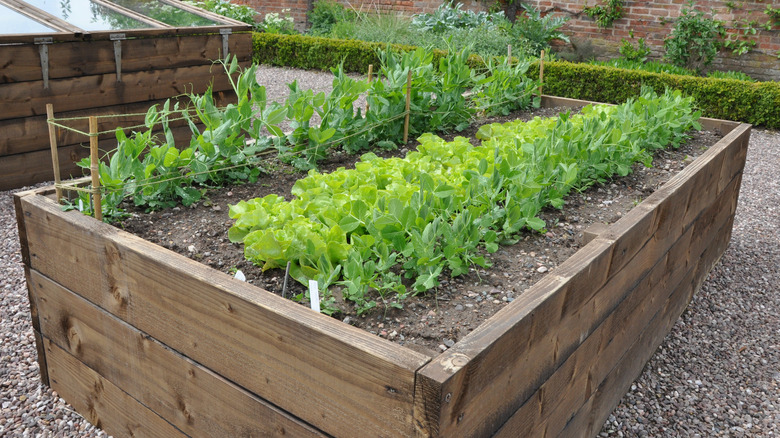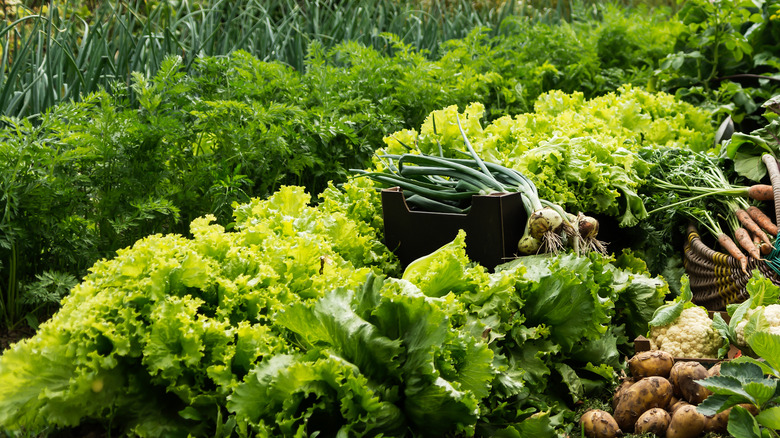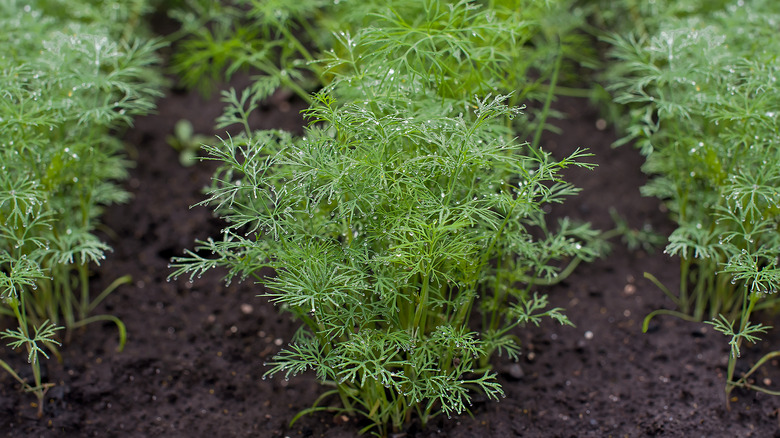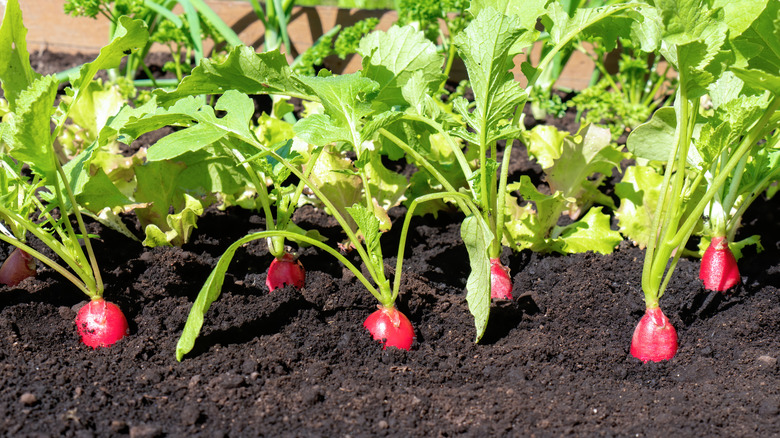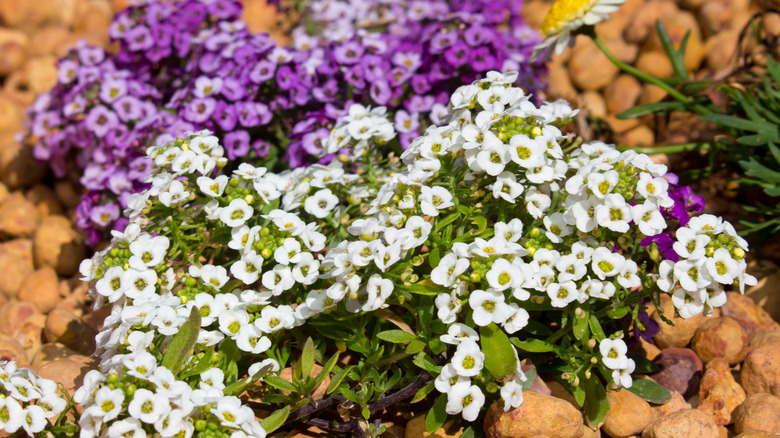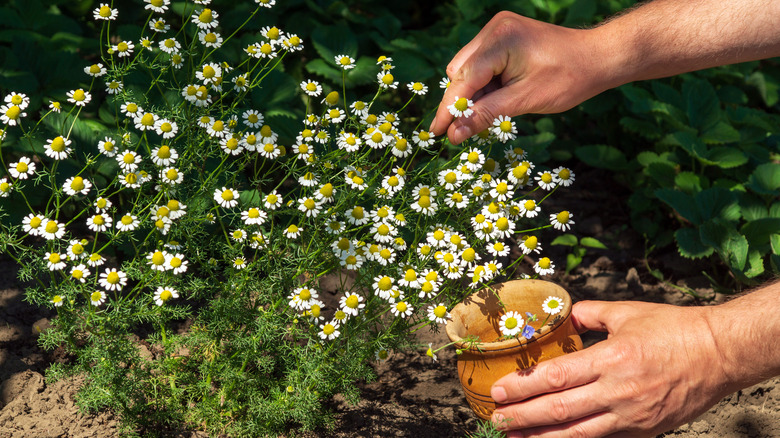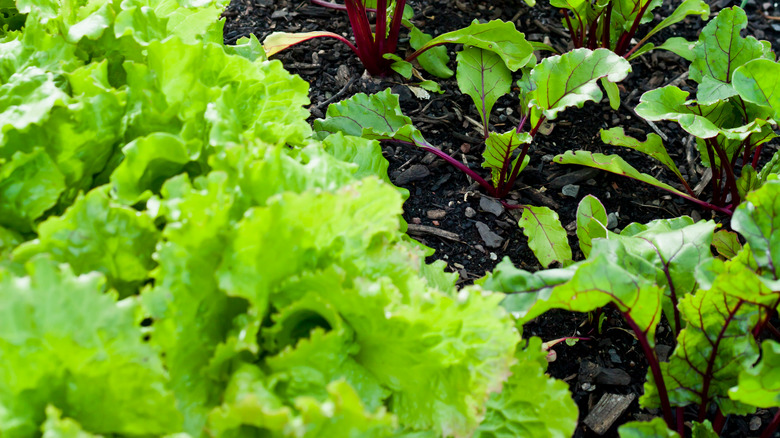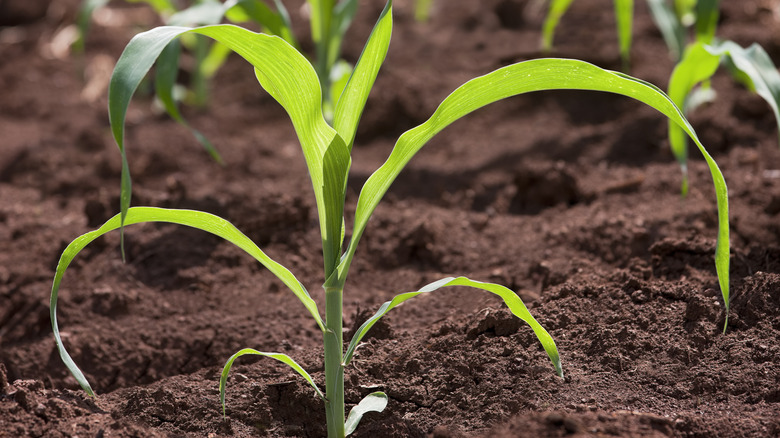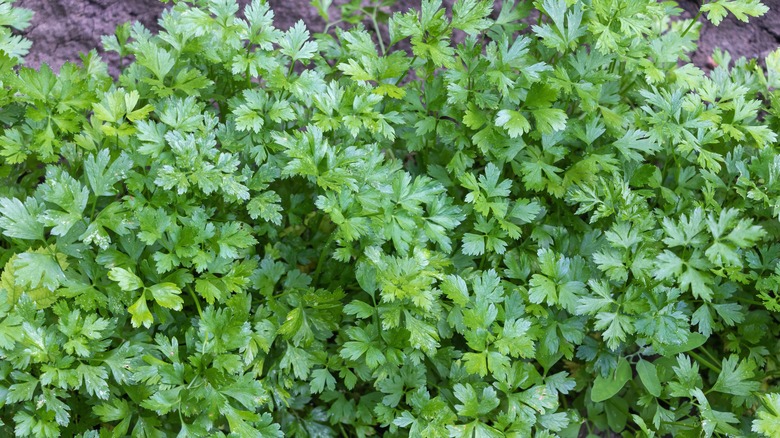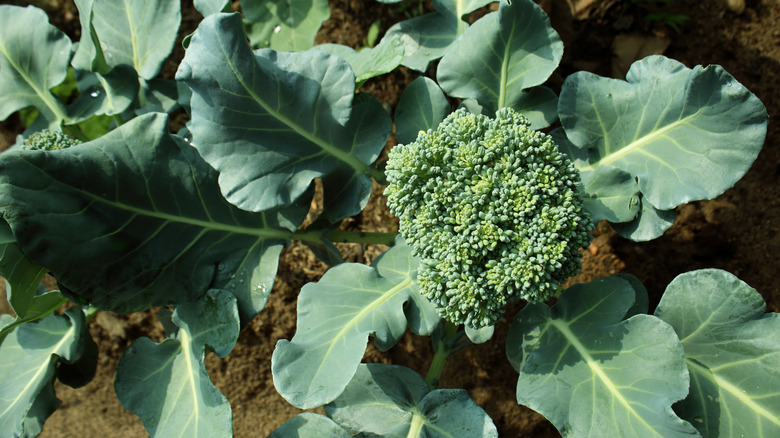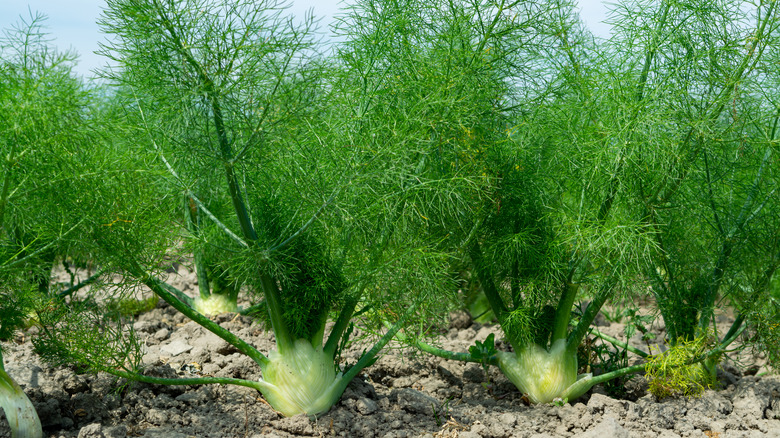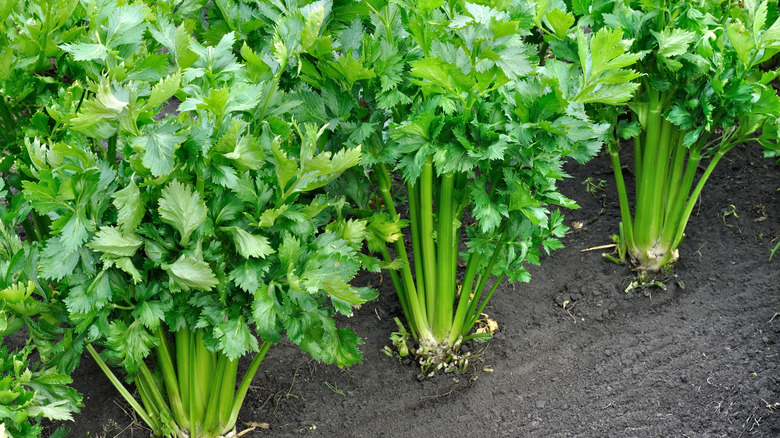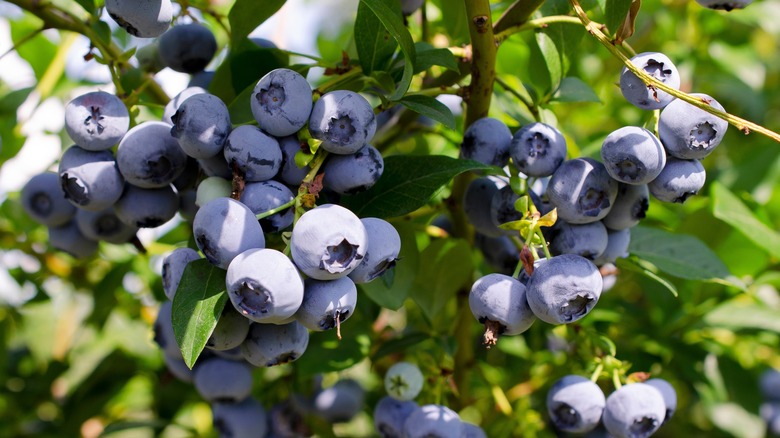The 24 Best Companion Plants To Grow With Lettuce In Your Garden (& Which To Avoid)
Imagine stepping into your garden, where you see the vibrant greens of lettuce mingle with a kaleidoscope of flora that enhances your favorite greens. Paired with the right companions, your lettuce can thrive, repel pests, and perhaps even taste better, transforming your patch into a verdant, productive Eden. But beware, as in any close-knit community, not all members play nice. These are the 24 best (carrots, calendula, cucumbers, and asparagus) and worst (think fennel and blueberries) companion plants for lettuce. Digging deeper into the companion plants you should grow together with lettuce, certain herbs, by their mere fragrance, serve as natural deterrents to pests looking to feast on your lettuce. Taller plants like corn can offer much-needed shade on sweltering summer days, reducing water evaporation and creating a microclimate that helps younger, more tender lettuce thrive.
But just as some friendships can be draining, some plants, when planted with lettuce, may attract unwelcome pests, compete fiercely for nutrients, or even release chemicals that stunt your lettuce's growth. However, companion planting is a science of balance. Each plant needs sufficient room for growth, ensuring none overshadows or outcompetes the other. Rotating crops can suffice to avert nutrient depletion and the potential build-up of pests and pathogens, but so can companion planting. After all, your garden's harmony and health are non-negotiable.
Calendula as a pest repellent and trap crop
Calendula bears a striking resemblance to marigolds, though they are distinct species. As a flowering companion plant for lettuce, it offers a splash of color amidst the sea of green. Not to mention, its pungent scent is an armor against some pests. These companions also excel as trap crops. Slugs and snails are drawn to the calendula's allure, a distraction tactic that spares the neighboring lettuce from becoming a pest's feast. Because of calendula's multifaceted role, your lettuce can thrive with its leaves pristine and untouched.
Marigolds are a natural nematode killer
Speaking of marigold lookalikes, how about marigolds themselves? Picture the bursts of yellow, orange, brass, or red flowers dotting your green sea of lettuce. Marigolds are more than just a feast for the eyes. Whether amid your lettuce or as a perimeter, they give off a distinct fragrance that can repel rabbits. Plus, they work silently below the surface. Per a 2019 study from Biology Open, they secrete alpha-terthienyl, a chemical that suppresses root-munching nematodes, along with slugs and thrips. These are the reasons you want to plant marigolds near your tomatoes, too.
Chives for fungi control
With their purple blooms, chives bring more to the garden party than just good looks and a zesty flavor. These companion plants for lettuce spell trouble for aphids and mites, thanks to their garlic-like aroma. Moreover, chives are fierce fighters against the dreaded Rhizoctonia solani, a soil-borne fiend responsible for bottom rot in lettuce. Cultivating a checkerboard pattern of lettuce and chives could be your best strategy, ensuring every lettuce plant benefits from the protection of chives while possibly enhancing the taste profile of your lettuce. Alternatively, plant them along the border of your lettuce patch.
Garlic for pest deterrence
Imagine garlic not as a kitchen staple but as the stalwart guardian in your lettuce patch. Garlic can be likened to a scarecrow for pests. Its potent smell sends aphids and other invaders packing. But there's more — when crushed, garlic cloves double as a homemade pest spray with anti-fungal properties. In the garden, garlic leaves cast shade for lettuce to thrive in. Consider planting garlic in strategic positions in your lettuce patch to benefit from the shade and pest-repellent properties of garlic — it's a good way to create a flourishing vegetable garden.
Nasturtiums as a magnet for beneficial predatory insects
With bright blossoms, nasturtiums are more than just eye candy among the hues of green lettuce — they're the ultimate decoy, luring aphids and other pests away with a sacrificial allure. And as if that wasn't enough in pest control, nasturtiums attract predatory insects like hoverflies, ladybugs, and parasitic wasps, which eat many pests, including aphids. They can essentially create a shield around your lettuce plants. Nasturtiums are best sowed in the lettuce patch, as they'll likely protest when confined in pots. And being edible, they're heroes in the garden and the kitchen.
Onions for pest deterrence
Pairing onions and lettuce brings more than just flavor to the table. Outside, they are a dream team, with onion exuding a sulfur-backed scent that steps up as a natural repellent, forming an invisible guard around your lettuce plants. In addition, this partnership suffices among savvy gardeners for efficient space utilization. With its shallow root system, lettuce coexists peacefully with the deeper, bulbous growth of onions, eliminating competition for space or nutrients. To fully capitalize on this duo, intersperse onion plants among your greens, ensuring a 4-inch space for leafy lettuce.
Cucumber is a cooling ground cover
Despite the mistakes everyone makes while planting cucumbers, adding them in with your lettuce is an interplay of light and shadow. As cucumbers climb toward the sun, their lush foliage shields the lettuce from the harshness of direct light. Your lettuce plants grow unencumbered by intense heat known to send them into premature bolting, which can result in a bitter flavor. Nestle your lettuce plants around the base of your cucumber plants. However, you should equip cucumber plants with a trellis or stakes for healthier fruits and more structural support.
Asparagus is beneficial for the soil health
Tall and feathery, asparagus fronds sway in the wind, casting a delicate shade under which lettuce unfurls. It's a veggie match made in heaven because lettuce thrives in chillier temperatures than asparagus. Still, picture how the slender asparagus stalks contrast the lettuce's broad leaves. But there's more going on in the soil. Asparagus is among the few plants that resist root-knot nematodes, nasty critters that love to feast on roots. Meanwhile, trailing lettuce varieties (think miner's lettuce) give back as a ground cover, keeping soil moisture and pesky weeds under control.
Swiss chard for space optimization
How about planting Swiss chards and lettuce together? Beneath those leafy Swiss chard umbrellas, lettuce basks in filtered sunlight, safeguarded from the midday heat that could wilt its tender leaves or push it to premature bolting. While Swiss chards send their roots deeper, lettuce plants spread theirs shallowly, so both veggies draw water and nutrients without distress. And given that the quicker-growing leaf lettuce can be harvested much earlier than Swiss chard, you can have a steady supply of greens from a limited garden space.
Mint is a pest deterrent
Mint, known for its boundless growth and fragrant leaves, plays the duo role of a guardian and ally in your lettuce plot. Its menthol-packed scent shields against pests drawn to lettuce's leaves. Plus, you score a bonus of a stash of homegrown aromatic herbs. However, mint's high growth rate can sometimes dominate your lettuce patch. The solution lies in strategic containment — mint planted in pots, interspersed among lettuce. This configuration takes full advantage of mint's protective qualities without overpowering, letting lettuce grow undisturbed. Occasional checks will suffice to ensure the mint stems stay put.
Strawberries are an attractive, weed-suppressing ground cover
The lush green of lettuce mingling with the deep red of strawberries isn't just a feast for the eyes. Strawberries double as a fantastic ground cover, coexisting happily with lettuce, as they both crave the same things in fertilizer and water. The mat formed by strawberry plants transitions into natural mulch that conserves moisture and suppresses weeds for a prime environment for lettuce. Strawberries also benefit from companionship, as lettuce foliage shields the fruits from birds. For a functional pairing, give the strawberries a head start, then sow lettuce seeds around them.
Peas for nitrogen fixation
The amazing climbers that are peas bring more to the table than just their sweet pods. They are nitrogen fixers, all thanks to the Rhizobia bacteria residing in the root nodules. Peas dish out nutrients to the microscopic organisms, which reciprocate this kindness by converting captured nitrogen gas into plant-usable form, ammonia. Planting lettuce and peas together means your greens will benefit from the increased nitrogen levels in the soil, which is essential for their growth. Peas also create a gentle shade, protecting lettuce from the full brunt of sun rays and bolting into bitterness.
Carrots are soil improvement allies, too
The taproots of carrots help create an ideal environment for lettuce plants. The complementary growth patterns of these vegetables allow them to be closely planted, with carrots taking the subterranean lead and lettuce spreading its roots shallowly. In addition, carrots are beacons for parasitic wasps, which happen to have a taste for lettuce aphids. Plant lettuce and carrots in alternating rows to maximize your garden space and encourage a thriving community of roots and leaves. Oh, and did you know you can grow new carrots from just the tops?
Dill attracts beneficial insects
Dill attracts an army of beneficial insects (think wasps, hoverflies, and lacewings), most of which are your allies in the biological control of lettuce pests. And as if that wasn't enough, dill's potent scent proves a formidable shield against aphids. And with their deep-reaching roots compared to lettuce's shallow roots, there's no drama over nutrients. Both love cool weather, however, so you'll need to watch out for bolting when the weather warms up. When your dill saplings hit their one-month growth spurt, it's time to transfer them into your lettuce patch.
Radishes are natural soil aerators
Compact, quick-growing radishes can be tucked into small spaces between lettuce, with each plant enjoying enough elbow room to thrive. But the real magic happens below the surface. Radishes' deep taproots pierce through the soil, breaking it up and enhancing aeration and drainage for your lettuce plants. Improved aeration is beneficial to soil microorganisms responsible for nourishing decomposition. In addition, radishes may deter pests, adding that extra layer of protection you desire for your precious lettuce. And as if that wasn't enough, radish also serves as a trap crop, luring villains away from your lettuce.
Sweet alyssum is a fragrant living mulch
Sweet alyssum has honey-scented blooms that create a carpet of effervescent white and occasional pink. Basking in the sunlight next to your verdant lettuce, it forms a living mulch, its low-growing, spreading habit that helps conserve moisture and suppress weeds. Another magic lies in its ability to summon aphid-munching insects like wasps, pirate bugs, and flower flies to your lettuce patch. Intertwine the sweet alyssum among your lettuce or let it border your patch to create a stunning contrast while protecting your crops.
Chamomile: the pest-patrolling herb
Embellished with white and yellow-dotted flowers, chamomile is a flower-powered magnet for beneficial insects. Lacewings, hoverflies, and parasitoid mini-wasps rally to its call, ready to eliminate mealybugs, spider mites, and the infamous aphids lurking around the lettuce leaves. However, this companion plant for lettuce goes beyond its defensive prowess. You can also harvest their fragrant blooms, from which you can brew chamomile tea, a concoction celebrated for its multiple health benefits. Regular trimming will suffice to keep chamomile in your garden compact. However, the dwarf varieties of chamomile demand no such attention.
Beets are another soil improvement ally
Beets, one of the best vegetables to grow for lazy gardeners, is another hero of the companion planting world. While your lettuce leaves thrive overhead, beetroots plunge into the earth. This benefits both crops since they feast at different tiers, so there is no competition for resources. Plant these allies right next to each other, and your lettuce will flourish above while your beets grow below. And while you await your beets to unveil their plump roots, the quicker-growing lettuce offers up its leaves so you can start the feast early.
Corn is a living umbrella for the shade-loving lettuce
Lofty stalks of corn rise as living pillars in the garden, with the leaves casting a shade beneath. Lettuce leaves find refuge from the punishing summer sun amid these gentle giants. This natural parasol staves off the premature bitterness of bolting, allowing the lettuce to enjoy a prolonged season of sweetness and crunch. The towering corn stalks also act like giant wicks, drawing moisture up from the soil. Lettuce planted near the already established stalks could reap the hydration benefits, so their leaves stay lush and tender.
Parsley is a growth inhibitor
Parsley has vibrant green leaves and exudes a distinctive aroma poised to fend off pests. It might seem a harmless neighbor to the unassuming lettuce. However, parsley can unleash a chemical arsenal into the soil capable of suppressing the growth of adjacent plants, a biological phenomenon known as allelopathy. Your lettuce will start to grow, only to find its progress thwarted by invisible detrimental chemicals from its parsley neighbor. It's this complex relationship that places parsley among the worst companion plants for lettuce.
Brassicas could cause nutrient deficiency
Brassicas, a family encompassing cabbage, broccoli, and cauliflower, are as demanding as they are nutritious. Their reputation as heavy feeders precedes them, making them quite the rivals for lettuce sharing the same soil. Many brassicas absorb a lion's share of nutrients, especially nitrogen. Such greediness could leave your lettuce languishing. Moreover, some members of this vegetable dynasty, among them garlic mustard, emit chemicals that disrupt lettuce's attempts at nutrient and water uptake. Either way, brassicas paired with lettuce could orchestrate an environment where the latter struggles to keep up.
Fennel has allelopathic tendencies
Flaunting its feathery foliage and bold, licorice-like flavor, fennel is a formidable foe to lettuce in the garden saga. Its beauty and appeal to beneficial insects disguise its darker side, one that dispatches allelopathic chemicals into the soil, which can inhibit lettuce's quest to flourish. But within this tale of darkness lies a twist. Fennel's allelopathic tendencies, though a curse to the lettuce, bear a gift for the garden. Research has shown that its allelopathic extracts can be harnessed to control perennial weeds like dandelion, ryegrass, and wild barley.
Celery is a siren call for pests
Celery and lettuce might share similarities in their crisp texture and refreshing taste, but when it comes to cohabitation in the garden, they are not friends. Celery acts as a conductor, attracting pests such as aphids and whiteflies with its siren call. Once drawn to the celery, these pests do not discriminate, turning their appetites towards the helpless lettuce, ensuring both plants face devastation. So, keep celery and lettuce away from each other unless you want to see a pest infestation that could damage both crops.
Blueberries and lettuce are a pH mismatch
Blueberry plants are celebrated for their delicious fruits, but that doesn't mean they're a good companion plant for lettuce. Thriving in quite acidic soils, blueberries can contrast with the slightly acidic to neutral-loving lettuce. This discrepancy in soil pH preferences means that either one or both could suffer, due to the soil pH's influence on how plants absorb nutrients. In their quests for nutritional balance, both plants are at odds with their soil preferences, leading to nutritional deficiencies or toxicities. It's incompatibility at its best.
